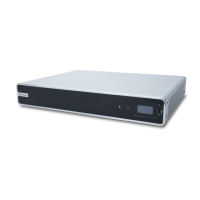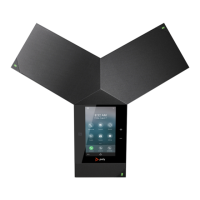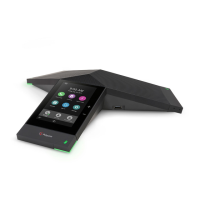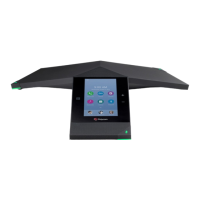Setting Description
NAT Configuration Specifies if the system automatically determines the
NAT public (WAN) address.
• If the system isn’t behind a NAT or is connected to
the network through a VPN, set this option to Off.
• If the system is behind a NAT that allows HTTP
traffic, set this option to Auto.
• If the system is behind a NAT that doesn’t allow
HTTP traffic, set this option to Manual.
NAT Public (WAN) Address The address callers from outside the LAN use to call
your system. If you configured the NAT manually, enter
the NAT public address here.
You can configure this option only when you set NAT
Configuration to Manual.
NAT is H.323 Compatible Identifies whether the system is behind a NAT that can
translate H.323 traffic.
This option is available only when you set NAT
Configuration to Auto or Manual.
Address Displayed in Global Directory Choose whether to display the system’s public or
private address in the global directory.
This option is available only when you set NAT
Configuration to Auto or Manual.
Enable SIP Keep-Alive Messages Specifies whether to regularly transmit keep-alive
messages on the SIP signaling channel and on RTP
sessions part of SIP calls. Keep-alive messages
maintain connections through firewall/NAT devices that
are often used at network edges.
If your system is in an Avaya SIP environment,
Polycom recommends that you disable this setting to
enable calls to fully connect.
Real-time media streams often use UDP for their speeds. If your system is behind a firewall that restricts
access to UDP ports, however, you can configure your system for only TCP connections.
Caution: Systems deployed outside a firewall are potentially vulnerable to unauthorized access. Visit
the Polycom Security section of the Knowledge Base at Polycom Support for timely security
information. You can also register to receive periodic updates and advisories.
Security Certificates
If your organization has deployed a public key infrastructure (PKI) for securing connections between
devices on your network, Polycom recommends that you have a strong understanding of certificate
management and how it applies to your RealPresence Group Series system before you integrate these
products with the PKI.
Securing the System
Polycom, Inc. 104

